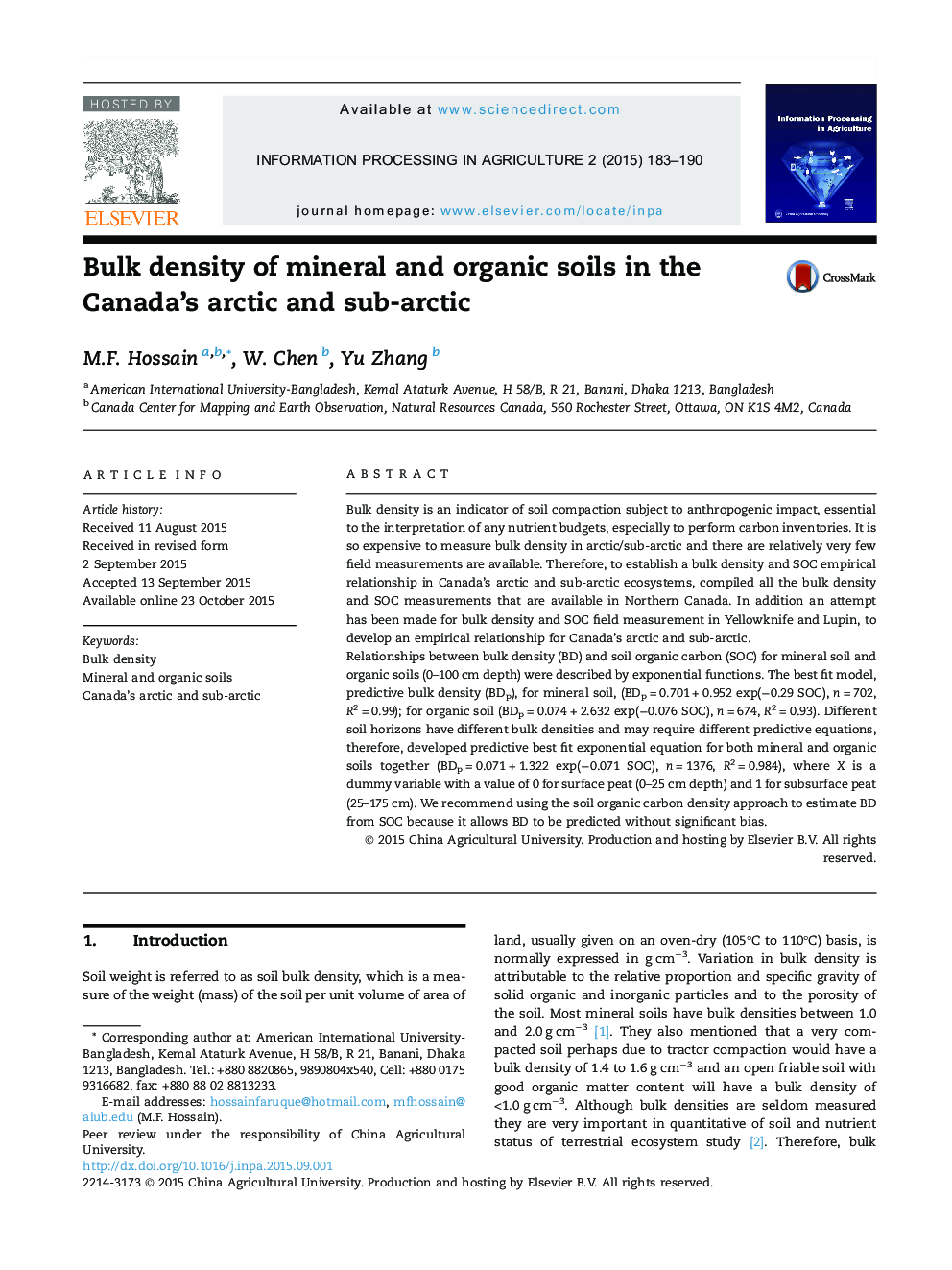| Article ID | Journal | Published Year | Pages | File Type |
|---|---|---|---|---|
| 4493342 | Information Processing in Agriculture | 2015 | 8 Pages |
Bulk density is an indicator of soil compaction subject to anthropogenic impact, essential to the interpretation of any nutrient budgets, especially to perform carbon inventories. It is so expensive to measure bulk density in arctic/sub-arctic and there are relatively very few field measurements are available. Therefore, to establish a bulk density and SOC empirical relationship in Canada’s arctic and sub-arctic ecosystems, compiled all the bulk density and SOC measurements that are available in Northern Canada. In addition an attempt has been made for bulk density and SOC field measurement in Yellowknife and Lupin, to develop an empirical relationship for Canada’s arctic and sub-arctic.Relationships between bulk density (BD) and soil organic carbon (SOC) for mineral soil and organic soils (0–100 cm depth) were described by exponential functions. The best fit model, predictive bulk density (BDp), for mineral soil, (BDp = 0.701 + 0.952 exp(−0.29 SOC), n = 702, R2 = 0.99); for organic soil (BDp = 0.074 + 2.632 exp(−0.076 SOC), n = 674, R2 = 0.93). Different soil horizons have different bulk densities and may require different predictive equations, therefore, developed predictive best fit exponential equation for both mineral and organic soils together (BDp = 0.071 + 1.322 exp(−0.071 SOC), n = 1376, R2 = 0.984), where X is a dummy variable with a value of 0 for surface peat (0–25 cm depth) and 1 for subsurface peat (25–175 cm). We recommend using the soil organic carbon density approach to estimate BD from SOC because it allows BD to be predicted without significant bias.
